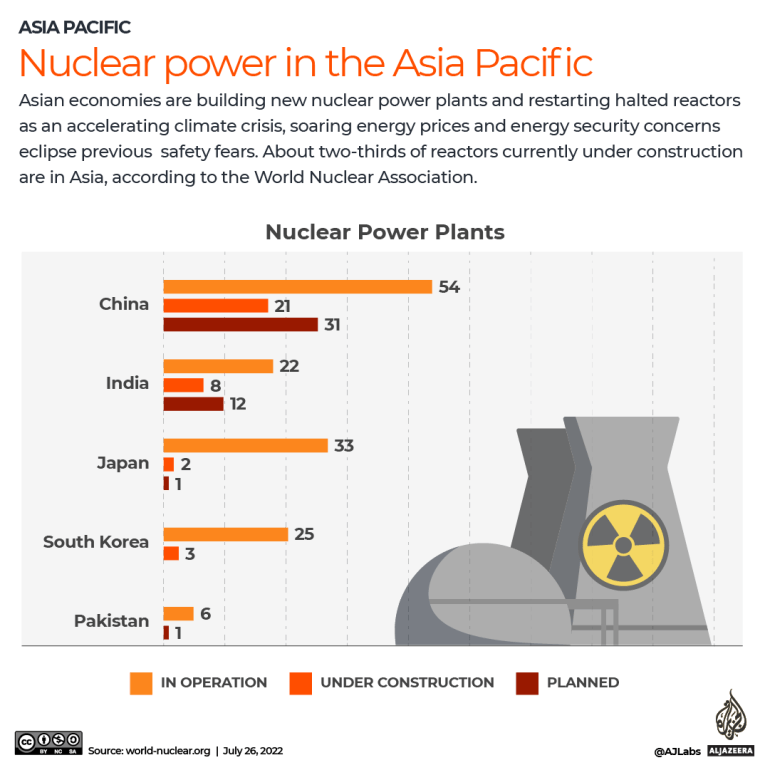
Japan has begun restarting nuclear plants that have been idle since the 2011 Fukushima disaster, with Prime Minister Fumio Kishida pledging to get at least nine reactors up and running by the northern winter to meet the country’s growing energy needs.
In South Korea, newly elected President Yoon Seok-yeol has resumed construction on two reactors and extended the lifespan of those already in operation, reversing his predecessor Moon Jae-in’s pledge to phase out nuclear power.
China, which introduced a year-long moratorium on new nuclear plants after the Fukushima disaster, has at least 52 nuclear reactors under construction or planned — more than the rest of the world combined — with proposals for more than 150 others.
China has been the biggest driver of the region’s nuclear resurgence by far, with plans to boost its nuclear output by 40% to 70 gigawatts by 2025 and have more nuclear plants than the rest of the world combined by the middle of the century. Between 2011 and 2021, the country increased its nuclear power output by about 400%, constructing 39 of the 68 new nuclear power units added around the world.
India and Pakistan, both of which have ambitious plans to enlarge their already considerable nuclear capacity, kick-started operations or broke ground on new nuclear projects in recent months.
“Over the last ten years nuclear generation has more than doubled in the East Asia region,” Cobb, the World Nuclear Association spokesperson, said.
“Every country using nuclear generation in the region is different, but the overall trend has first been driven by commitments to reduce greenhouse gas emissions, and more recently by the need to improve security of supply and switch away from increasingly expensive fossil fuel imports.”